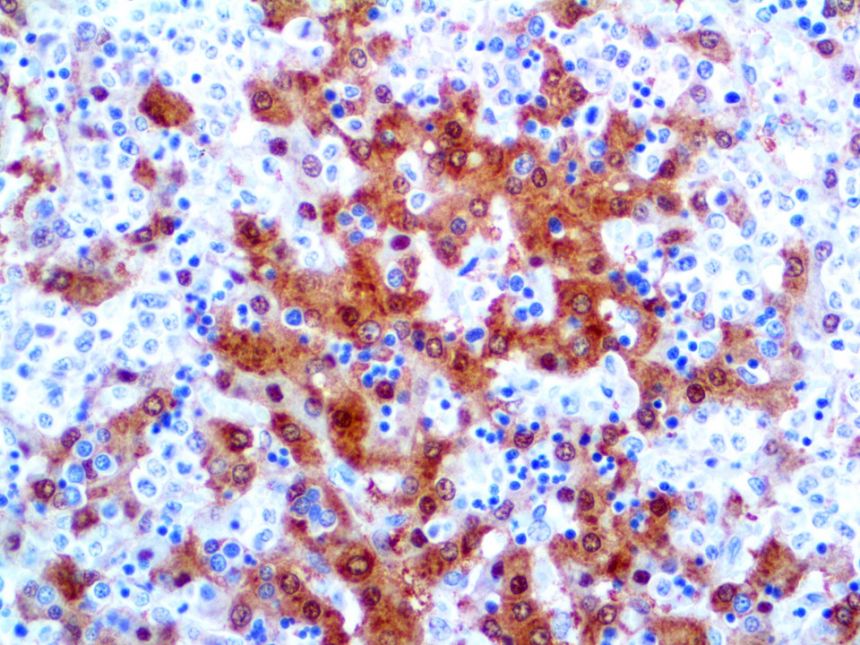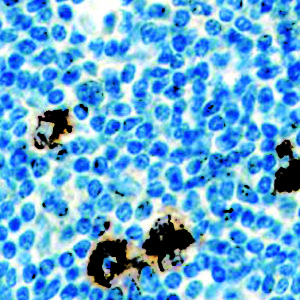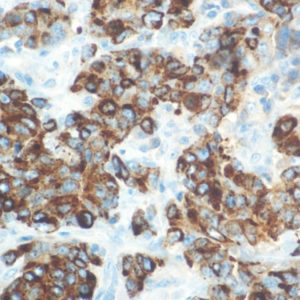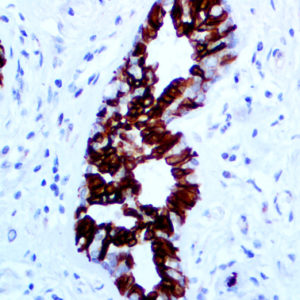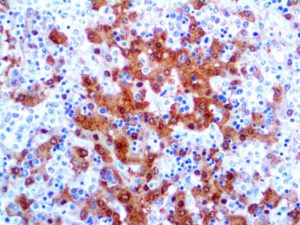
IHC of Arginase-1 on a FFPE Hepatocellular Carcinoma Tissue
| Intended Use | For In Vitro Diagnostic Use | |||||||||||||||||||||||||||||||||||
| Summary and Explanation | Arginase-1 is the catalyst for the fifth and final step in the urea cycle, which is a series of biochemical reactions in mammals during which the body disposes of harmful ammonia. Arginase-1 works to convert L-arginine into L-ornithine and urea. Arginise-1 is located primarily in the cytoplasm of the liver. Arginase-1 consists of three tetramers, and the enzyme requires a two-molecule metal clusterof manganese in order to maintain proper function. These Mn2+ ions coordinate with water, orienting and stabilizing the molecule and allowing water to act as anucelophile and attack L-arginine, hydrolyzing it into ornithine and urea.Arginase-1 is abundantly expressed in the liver and it represents a sensitive and specific marker of benign and malignant hepatocytes. In sections of normal liver, anti-arginase 1 produces strong, diffuse cytoplasmic reactivity in all hepatocytes throughout the lobule. In a small percentage of cases, patchy nuclear reactivityis also evident in hepatocytes along with the strong cytoplasmic reactivity. Hepatocellular carcinoma usually shows higher protein expression of ARG1 than normal liver cells | |||||||||||||||||||||||||||||||||||
| Antibody Type | Rabbit Monoclonal | Clone | EP 261 | |||||||||||||||||||||||||||||||||
| Isotype | IgG | Reactivity | Paraffin, Frozen | |||||||||||||||||||||||||||||||||
| Localization | Cytoplasmic, Nuclear | Control | Liver, Hepatocellular Carcinoma | |||||||||||||||||||||||||||||||||
| Presentation | Arginase-1 is a rabbit monoclonal antibody derived from cell culture supernatant that is concentrated, dialyzed, filter sterilized and diluted in buffer pH 7.5, containing BSA and sodium azide as a preservative. | |||||||||||||||||||||||||||||||||||
| Availability |
| |||||||||||||||||||||||||||||||||||
| Note: For concentrated antibodies, please centrifuge prior to use to ensure recovery of all product. | ||||||||||||||||||||||||||||||||||||
